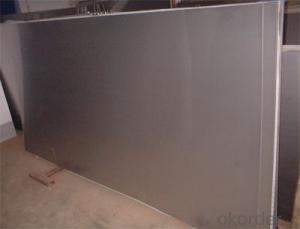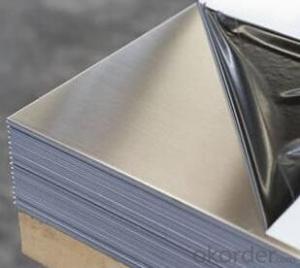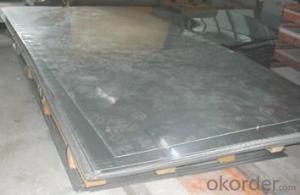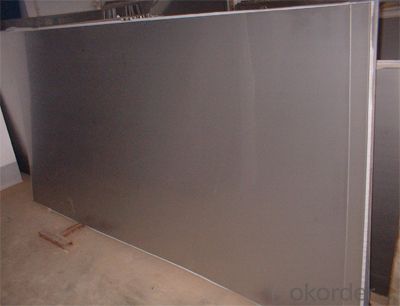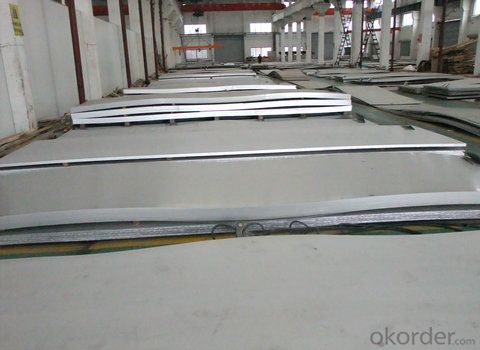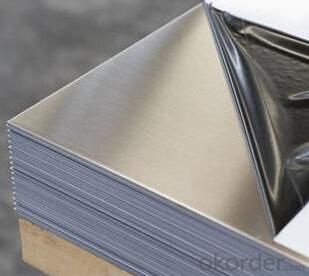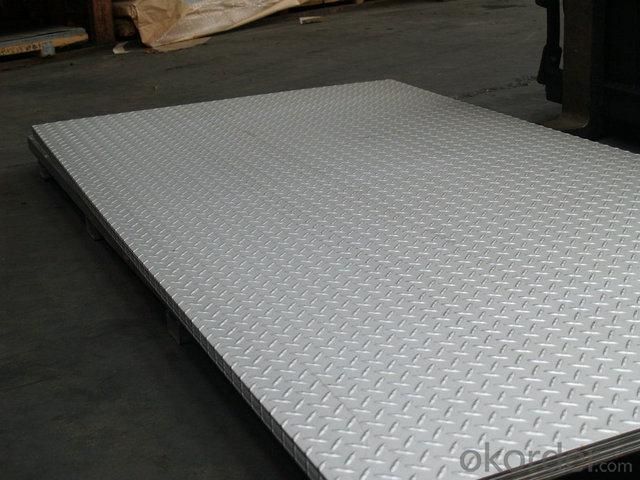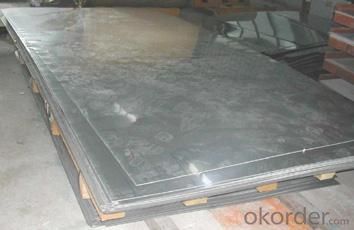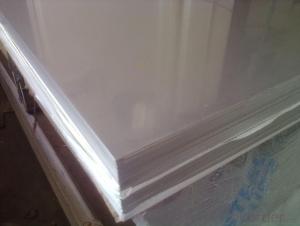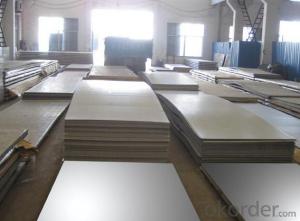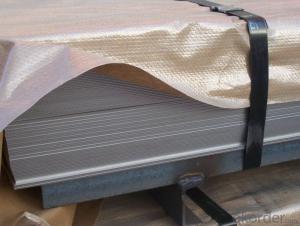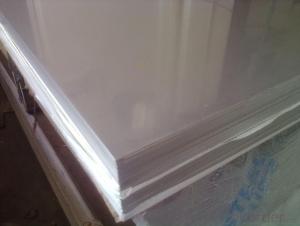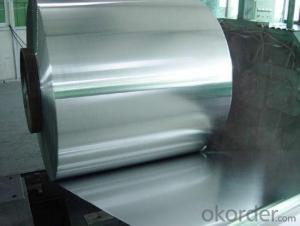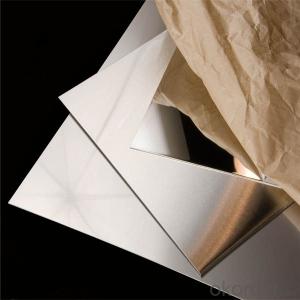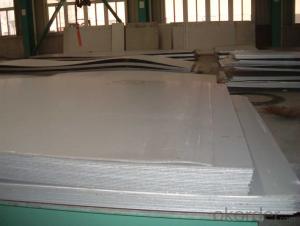Stainless Steel sheet 304 with good polishing treatment
- Loading Port:
- Shanghai
- Payment Terms:
- TT OR LC
- Min Order Qty:
- 10000 m.t.
- Supply Capability:
- 5000000 m.t./month
OKorder Service Pledge
OKorder Financial Service
You Might Also Like
Hot sale stainless steel sheet 201/202/304/304l/316/316l/430 in china alibaba
Description of Stainless Steel Sheet:
Description | steel sheet,hot rolled steel sheet,cold rolled steel sheet, steel sheet,sheet,steel plate |
Standard | ASME, ASTM, EN ,BS,GB,DIN, JIS etc |
Application | Steel sheet applies to construction field, ships building industry, petroleum & chemical industries, war and electricity industries, food processing and medical industry, boiler heat exchanger, machinery and hardware fields. |
Packaging | Standard export sea-worthy packing |
Delivery time | 10-30 days |
Quality | No.1 |
Productivity | 500 tons/Day |
Note | Our company has cooperative relation between the domestic agents. Stainless steel sheet can be made accordingto the customers requirements. Fasten delivery. Quality assured. |
Contacts | If you have any question,please feel free contact me. |
Stainless steel sheet surface finish characteristics
Surface finish | Characteristics and application |
2B | The surface brightness and flatness of no2B is better than no2D. then through a special surface treatment to improve its mechanical properties,No2B could nearly satisfy comprehensive uses. |
No.1 | Polished with abrasive belt of grit#100-#200, have better brightness with discontinuous coarse stria, used as inner and external ornaments for building, electrical appliances and kitchen utensils etc. |
No.4 | Polished with abrasive belt of grit #150-#180,have better brightness with discontinuous coarse stria, but thinner than No3, are used as bathtub buildings inner and external ornaments electrical appliances kitchen utensils and food processing equipment etc. |
HL | Polished with abrasive belt of grit #150-#320 on the NO.4 finish and has continuous streaks, mainly used as buildings ornaments elevators, door of building, frontal plate etc. |
BA | Cold rolled, bright annealed and skin-passed, the product have excellent brightness and good reflexivity like mirror, kitchen apparatus, ornament etc. |
8K | The product have excellent brightness and prefer reflexivity can to be the mirror. |
Main Features of stainless steel sheet :
•Escalator, Elevator, Doors
•Furniture
•Production tools, Kitchen appliances, freezers, cold rooms
•Auto Parts
•Machinery and Packaging
•Equipment and Medical devices
•Transport system
Product Details:
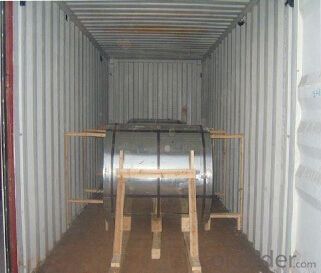
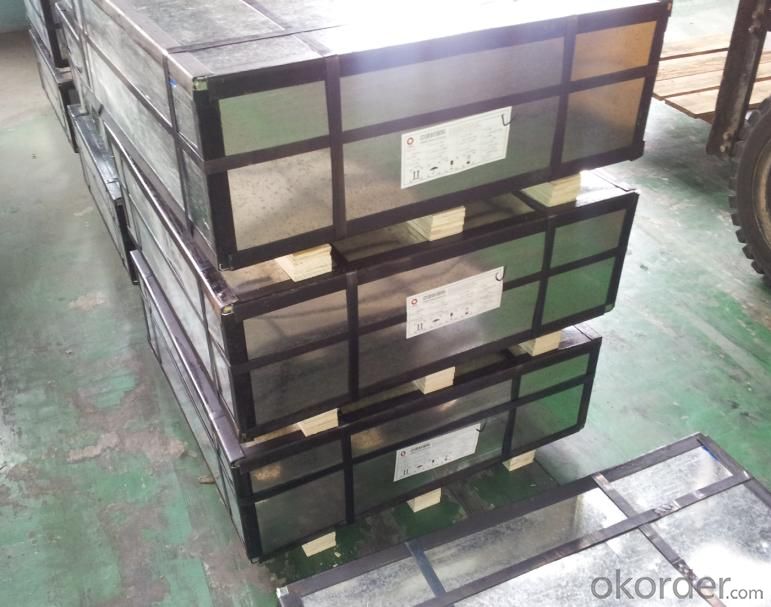
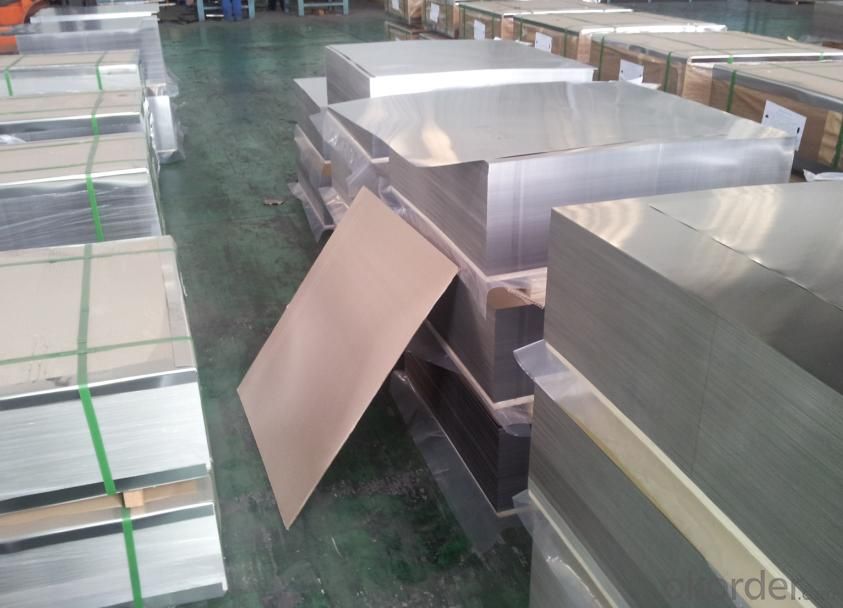
Sandard Seaworth Packing(wooden packing with water proof paper)
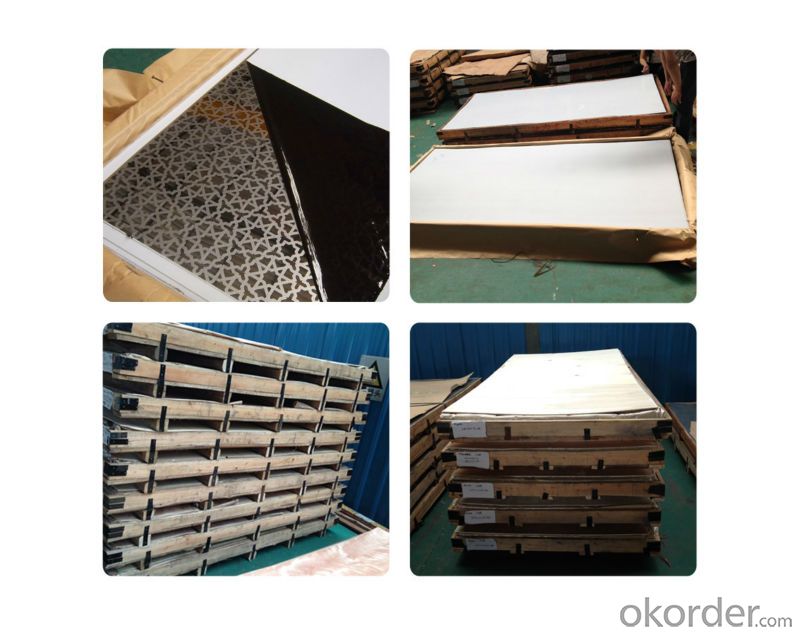
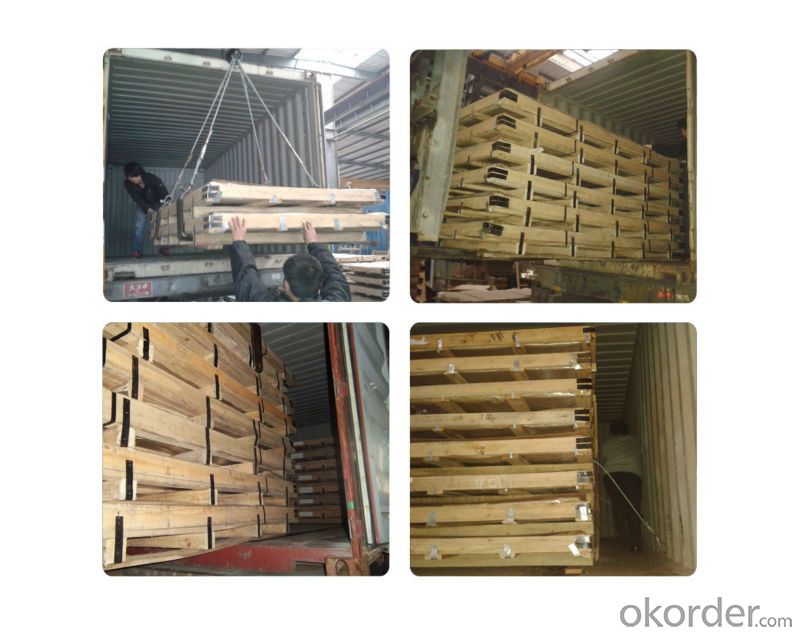
FAQ:
1. What's the quality?
very fine
2. How long get reply?
within 24 hours
If you have any question about stainless steel sheets,donot forget to sending the email to Us! You will get the competitive Price and have a very good experience about the Buying Process! CNBM International Corporation is always your trustful friend!
- Q: Are stainless steel sheets suitable for chemical storage vessels?
- Yes, stainless steel sheets are suitable for chemical storage vessels. Stainless steel is known for its excellent corrosion resistance, making it an ideal material for storing various chemicals. It is resistant to most acids, alkalis, and solvents, which ensures the integrity of the storage vessel and prevents any chemical reactions or leaks. Additionally, stainless steel is highly durable and can withstand high temperatures and pressure, making it suitable for a wide range of chemical storage applications.
- Q: Can stainless steel sheets be used for wall cladding?
- Yes, stainless steel sheets can be used for wall cladding. Stainless steel is a durable and long-lasting material that is resistant to corrosion, making it a suitable choice for cladding applications. It provides a sleek and modern appearance, adding an aesthetic appeal to the walls. Stainless steel sheets can be easily installed and maintained, making them an excellent option for both interior and exterior walls. Additionally, stainless steel sheets offer excellent fire resistance and can withstand high temperatures, making them a safe choice for wall cladding.
- Q: Can stainless steel sheets be used as a backsplash in kitchens?
- Stainless steel sheets are indeed suitable for use as backsplashes in kitchens. The durability, heat resistance, and low-maintenance nature of stainless steel make it a popular option for this purpose. It can endure stains, water, and rust, making it particularly well-suited for areas prone to spills and splatters. Moreover, cleaning stainless steel sheets is a breeze, as they can be easily wiped down with soap and water or stainless steel cleaner, ensuring a hygienic and sanitary environment in the kitchen. Additionally, the sleek and contemporary appearance of stainless steel adds a touch of modernity to any kitchen decor. In summary, opting for stainless steel sheets as a backsplash is both practical and stylish.
- Q: Inspection method for stainless steel welding
- The base material is square, and the appearance surface is not allowed to have defects such as pits, hemp spots, scratches and indentations.5) containers must be loaded with water to test for leaks6) appearance requirements refer to stainless steel appearance inspection standard
- Q: What is the impact strength of stainless steel sheets?
- The impact strength of stainless steel sheets is relatively high compared to other materials, making them resistant to cracks and fractures when subjected to sudden forces or impacts.
- Q: What are the standard dimensions for stainless steel sheets?
- The standard dimensions for stainless steel sheets vary depending on the type and grade of stainless steel being used. However, there are some common sizes that are widely available in the market. For most stainless steel sheets, the standard width ranges from 36 inches to 48 inches, with a length varying between 72 inches to 120 inches. These dimensions are commonly used for stainless steel sheets used in various applications such as construction, automotive, and manufacturing. The thickness of stainless steel sheets can also vary, with common options ranging from 0.024 inches to 0.1875 inches. Thinner sheets are often used for decorative purposes or lightweight applications, while thicker sheets are utilized for heavy-duty applications that require higher strength and durability. It is important to note that these dimensions are general guidelines and can vary depending on the specific requirements of a project. Additionally, custom sizes can also be manufactured to meet the unique needs of a particular application. Overall, the standard dimensions for stainless steel sheets provide a range of options suitable for various industries and purposes, ensuring that there is flexibility in selecting the appropriate size for a specific project.
- Q: What is the fatigue strength of stainless steel sheets?
- The fatigue strength of stainless steel sheets can vary depending on various factors such as the grade of stainless steel, surface finish, thickness, and any surface treatments or coatings applied. It is typically higher than that of carbon steel, making stainless steel sheets more resistant to fatigue failure under cyclic loading. However, the exact fatigue strength value will vary and can be determined through testing and analysis specific to the particular stainless steel sheet being used.
- Q: Are stainless steel sheets resistant to acetic acid?
- Yes, stainless steel sheets are generally resistant to acetic acid.
- Q: What is the maximum thickness of stainless steel sheets for bending?
- Factors such as the type of stainless steel, the bending method, and available equipment determine the maximum thickness for bending stainless steel sheets. Typically, sheets up to 3/16 inch (4.76mm) thick can be easily bent using common techniques and equipment. Nevertheless, thicker sheets may necessitate specialized machinery or processes like hydraulic or press braking to achieve the desired bend. To determine the maximum thickness that can be effectively bent for a specific application, it is crucial to consult with a metal fabrication expert or refer to specific bending guidelines provided by the stainless steel manufacturer.
- Q: What are the different types of perforations available for stainless steel sheets?
- Stainless steel sheets offer several options for perforations, each with its own purpose and characteristics. Here are some of the most common types available: 1. Round Perforations: The most widely used type, these consist of evenly spaced round holes punched through the sheet. They provide good airflow, visibility, strength, and durability. 2. Square Perforations: Similar to round perforations, square ones have evenly spaced square holes. They are preferred for a more modern and geometric aesthetic, creating visually appealing patterns. 3. Slotted Perforations: These have elongated, rectangular holes for better drainage and airflow. They are ideal for grilles, screens, and filters. 4. Hexagonal Perforations: Featuring hexagon-shaped holes, this type offers an interesting visual pattern and increased strength and rigidity. 5. Decorative Perforations: Designed to enhance the aesthetic appeal, these come in various shapes, sizes, and patterns such as floral or custom designs. They are commonly used in architecture, interior design, and decorative panels. 6. Micro Perforations: These are extremely small and closely spaced holes for applications requiring high precision and fine filtering, like speaker grilles, ventilation systems, or sieves. It's important to note that the availability of specific perforation types may vary depending on the supplier or manufacturer. Additionally, some suppliers may offer custom perforation options to meet unique requirements or design preferences.
Send your message to us
Stainless Steel sheet 304 with good polishing treatment
- Loading Port:
- Shanghai
- Payment Terms:
- TT OR LC
- Min Order Qty:
- 10000 m.t.
- Supply Capability:
- 5000000 m.t./month
OKorder Service Pledge
OKorder Financial Service
Similar products
Hot products
Hot Searches
Related keywords
